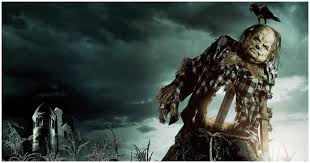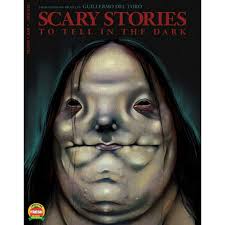For centuries, scary stories have enthralled readers. These tales test our curiosity and courage, bringing a sense of suspense and terror to life with each turn of the page.
These narratives continue to tap into the timeless adventure of self-exploration of the very thing we fear the most, and comes as a delight to any mind irrespective of age.
What Are Scary Stories?
Scary stories have the very intention of evoking fear, unease, and tension. These stories contain suspenseful plots, and often, climax around the supernatural, brimming with ‘ghosts’ and ‘monsters’ with all the mystifying twists and turns.
Stringing phrases together to tell a story always creates a chilling experience, and is the essence of all scary stories. Contrary to what most believe, these timeless tales are not associated solely with the dark nights, and have gained fame as the ‘campfire tales’ too.
Writers blend suspense with mystery, modern fears with folklore, but what they all have in common is the essence of joy, thrill and fear they provide while reading.
The Origins of Scary Stories
Scary stories are as old as time, and so is the retelling of them. To make sense of the bizarre and unexplainable, ancient cultures found solace in ghost stories. These too, like every mythical or legendary story, contained morals to teach.
Medieval tales teemed with grim warnings too, and firmly defined the age of scary stories with a suspenseful plot line. Mary Shelley’s ‘Frankenstein’ is also known for breathing life into the format of modern scary stories.
Folktales from various cultures added their own flavors to global stories. Every culture made monsters or villains based on their fears.
The potential of frightening stories was further advanced with gothic literature. There were now vampires, haunted castles, and dangerous mysteries to explore. Authors like Edgar Allan Poe incorporated elements of psychological horror, which enriched the genre. To this day, it continues to progress to new forms of modern-day fiction.
Why Do People Enjoy Scary Stories?
The emotional roller coaster offered through scary stories is perhaps the most alluring aspect. For one, they present the opportunity to face fear in controlled environments. Readers can experience anticipation and excitement without any risk. This is entertaining, especially in the right amount of challenge.
In addition, the outcome of the story is often unpredictable. Every new twist and turn feeds imagination. People have an innate need to explore the unknown. As such, this elicits a captivating response, which is rare in literature.
The stories also convey important life lessons such as bravery, fear, and how to face challenges. Characters dealing with life-threatening circumstances can be a source of great inspiration. Many people resonate with the elation and suffering shared by the main characters in the story.
To add on, the stories double as a means of bonding. People come together to experience fear. These have the added effect of bonding targeted right around holidays, such as Halloween.
Elements That Define Scary Stories
The foundation of any scary story is a set of elements, which heighten the thrill.
Suspense is an essential element for keeping readers hooked. Suspenseful stories add unpredictability which enthralls the audience.
The creation of an unsettling tone can be achieved using vivid imagery. Spooky sounds and even the slightest paranormal sensations can enhance the feeling of fright.
The readers can visualize themselves living through the frightful events when the characters are familiar. Frightful tales become more engaging when ordinary people are featured. Relatable protagonists help readers connect.
Stories with open endings evoke curiosity with endless questions. However, the more the questions multiply, the more the story lingers. That feeling can be experienced even years after reading the story, which improves its impact.
Scary stories share a universal appeal:
The Tell-Tale Heart is one of the fright and horror stories by Edgar Allan Poe, which is psychologically intense. The suspense does not relent due to the unreliable narrator.
Dracula by Bram Stoker goes deep into the theme of good and vivid and encapsulates the fear of the evermenacing vampire.
Stephen King sets the modern-day psychological horror The Shining in a hotel, making the location even more bone-chilling through his vivid and frightening descriptions.
Jackson Shirley The Lottery is one short story which revels in mundane yet makes the audience grow uneasy.She has greatly contributed to shaping the path of horror stories and influencing how writers approach them through a more sophisticated lens.
Creating a Frightening Story:
An element of novelty, elevating the ordinary, the idea of the uncanny can be combined to devise and tell a frightful an spine chilling tale.
Imagine an unconventional but attention-grabbing story that induces caution and self-awareness. Continuously build upon suspense while intricately laying out the storyline.
As the narrative unfurls, concentrate on crafting descriptions for the settings that elicit fear. The readers should be so engrossed that the world created by the story envelops them completely. Employ details involving shadows, sounds, and winds.
This narrative is even better enhanced with compelling heroes facing unanticipated horrors. Allow readers to witness humanity and emotions through their challenges. Authentic reactions imitate real-world situations very well.
Audiences remember and cherish story endings that deviate from the anticipated plot. Ensure and verify that the far-fetched elements seamlessly blend with the storyline. Building identifiable and frightening storylines and narratives elicits positively surprising reactions.
The Impact of Scary Stories in Today’s Media
Today’s scary stories undergo adaptations on different media platforms. While books remain a popular and immersive spooky experience, films and podcasts have also sparked interest recently.
These narratives also serve as the basis for visual storytelling in horror films. Tension is often heightened during climactic scenes through the use of sounds and music. The audience is captivated to the very end with well-crafted suspenseful plots.
The classic spooky stories are given a contemporary touch through podcasts. Modern takes on classic novels such as Frankenstein further diversify and improve access to frightening tales for different readers.
The Psychological Appeal of Scary Stories
The concept of scary stories dives into underlying psychological topics that touch upon the actions of people.
Fascinating fear as a concept only emerges in a setting without physical threats. Within predetermined limits, individuals dare to test their bravery.
Spooky stories also function as a means to cope with stress. Computer-generated fears tend to alleviate authentic fears in the real world in a surprising manner. Fictional characters express multifaceted feelings through their struggles as they skillfully find ways to resolve their challenges.
Viewers study and interpret the symbolic aspects of darker themes in works of art. They think of the existential questions about life and death that the supernatural plot narratives pose. The potent influence evokes a dual response of intrigue and terror in the audience.
Transcending Boundaries: The Sharing of Scary Stories
Ghost stories are timeless and are told without consideration of the age of the audience. Older members of the society tell ghost stories to children for their amusement. This form of sharing marks the transmission of culture in a society.
Seasonal celebrations provide a reason for reviving the unsolved puzzles of the world. The atmosphere of a campfire is a natural setting. The younger generation adds their own unique to the old tales while still respecting the original versions.

Belonging to a group brings with it a unique, collective intensity of emotions as listeners. These feelings lead to strong relationships sparked by stories rife with excitement. Writers add to and change scary stories, but they preserve the essence of the study of fear across cultures and throughout history.
The Foundation for the Existence of Scary Stories
Scary stories are preserved for posterity because of the innate interest in fear that humans have. They portray tales that people have faced in their everyday lives — the fear of the unknown and the perilous. These tales are told in modern style as old themes are used as the foundation.
Global sharing of multimedia stories is made easier by technology.
Writers design unique adventures based on traditional cultures. These stories integrate readers through emotions that are deeper than the physical level.
Communities are trying to preserve their age-old customs traditions during the modern rush. Deep-rooted fears that confront communities are increasingly provoking thoughtful dialogues. Readers crave well-crafted stories that gripping and dramatic syntax brings alive.
How Spooky Stories are Celebrated in Contemporary Society
Holidays such as Halloween celebrate the recounting of spooky stories. Writers showcase spooky themes across genres of writing, and readers enthusiastically embrace them. On such occasions, publishers release special collections featuring a myriad of haunting tales.
Resourceful techniques count dramatic readings as atmospheric presentation strategies. Immersive theater brings written works to life for audiences in unforgettable ways. Innovative new haunting classics are born from the collaborative efforts of visual artists.
Museums take a deep dive into the history of the horror genre, exploring the significance of the works within a culture and globally. Society as a whole learns the significance of literature posed lightly yet deeply within a culture, framed and woven into a rich and bold tapestry across the globe.
Final Thoughts
Facing fears together empowers people, and scary stories uncover deeply hidden emotions. Imaginative settings and mysterious twists with brave characters connect readers, binding communities through shared excitement. Humanity will always be enticed by fear, and scary stories will forever thrive.
READ MORE; Short-poems…..






